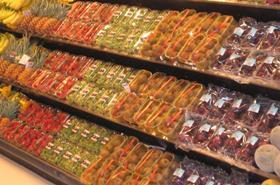
The Perishables Group has identified five produce categories to watch in 2010 – berries, tomatoes, speciality potatoes, living lettuce and refrigerated juices – based on their evolving and appealing to consumers and adherence to current trends such as health, convenience and sustainability.
Although the berry category is a long-time staple in the produce department, The Perishables Group says total berry dollar sales have grown 58 per cent over the past five years, led by blackberries and blueberries with increases of 122 per cent and 87 per cent respectively.
“Berry sales growth can be attributed in large part to the continued expansion of the variety and quality of berries that are available throughout the year, with production expanding domestically as well as in Mexico, Chile and Argentina.”
The organisation claims other important factors in the growth of the berry category include the significant presence of organic berries and the healthy eating properties of the fruit which have fit in well with the superfood craze.
While tomatoes are another staple in the produce department, The Perishables Group says the category is now rapidly evolving in terms of variety and packaging, which, in turn, is bringing greater value to the segment.
“This strategy has transformed the tomato category, which was driven primarily by field grown beefsteak tomatoes just five years ago,” the agency said. “Tomatoes are growing their image as a healthy and convenient snack thanks to sweet varieties such as the Sugardrop, developed by Tesco, and packaging such as the eye-catching dome-shaped clamshell used for Cherub snacking tomatoes.”
Speciality potatoes, meanwhile, satisfy current trends including convenience and variety. “Not only do many specialty potatoes add color and size variations to home-cooked dishes, but also to potato displays at retail,” the group said.
And after launching less than five years ago, The Perishables Group claims living lettuce is now warranting attention in the leafy greens section.
“Grown hydroponically and packaged with its roots still intact, living lettuce is a great option for retailers and consumers due to its extended shelf life of up to 18 days and its sustainable growing practices that require little to no use of pesticides,” the group said.



